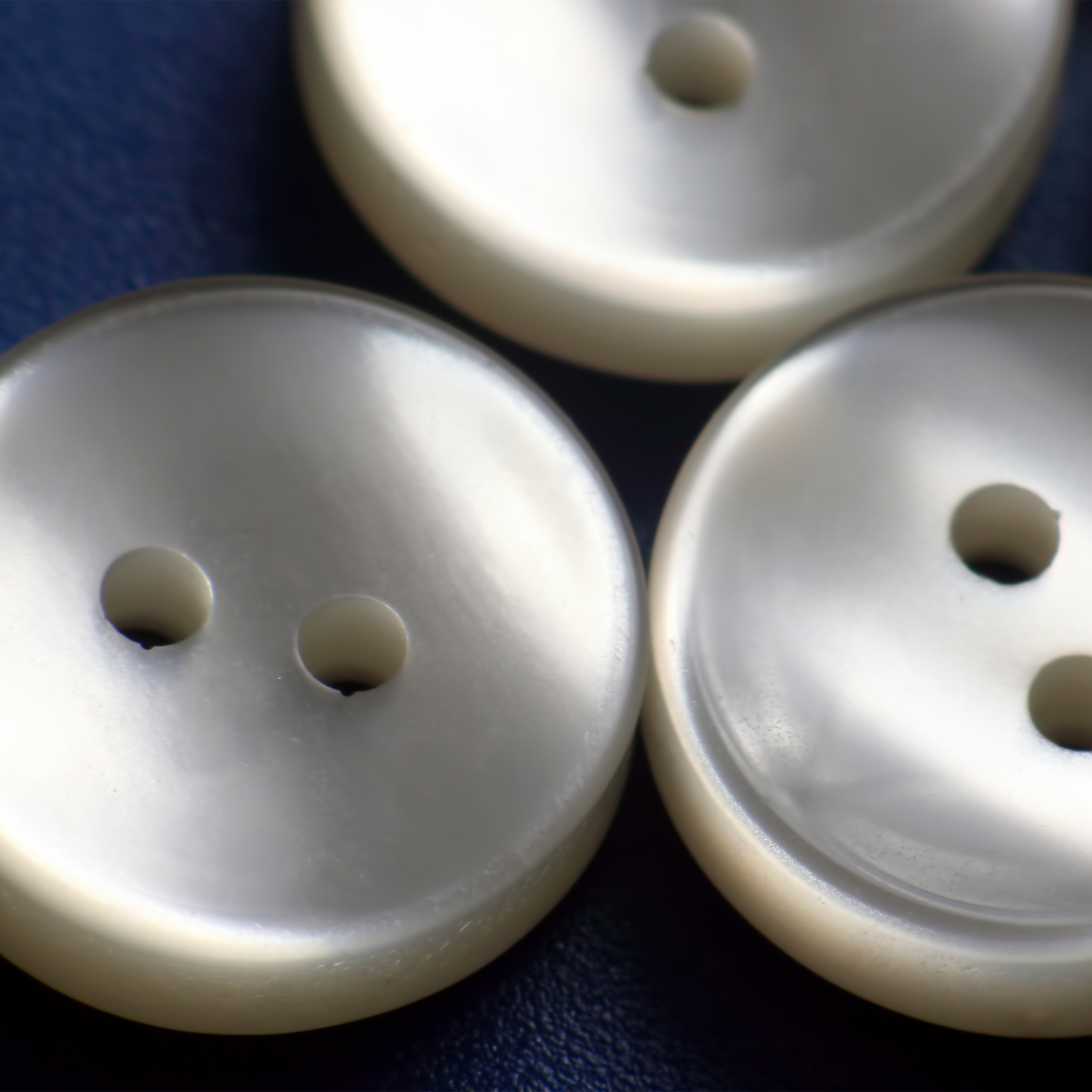How can you tell if a suit is truly high quality?
Most people choose a suit based on the cut, colour or tailoring brand. These visible details, however, only reveal part of the picture. The real signs of quality are found in how the suit is made, including the features you might not notice at first. This guide highlights twelve tailoring details most people miss and how to spot real tailoring value before you buy.
Types of Suit Construction: Fused vs Half Canvas vs Full Canvas

Canvas construction affects how the jacket drapes, breathes and ages. While fused suits may feel firm at first, full canvas jackets mould naturally to your body over time. These are core suit construction signs of long term quality.
Pro Tip: Always pinch the chest area to feel for floating canvas—it’s one of the fastest ways to tell if a suit is worth the price.
Book a Suit Consultation
Not sure what to look for in a quality suit? Sit down with one of our Savile Row-trained consultants and see the difference in person.
1. Check the Buttonholes: Are They Hand Stitched or Machine Made?
Look at the cuff of a jacket. That tiny slit can reveal everything.
Hand stitched buttonholes, especially Milanese styles, show slight irregularities. You might spot a looped bar tack or a subtle wobble in the stitching. By contrast, machine made buttonholes are often perfectly uniform and flat.
Some brands use AMF machines to imitate handwork.
What is AMF stitching?
AMF stands for Automatic Machine Finish. These machines replicate the look of hand stitching along edges but lack the variation and texture of true handwork.
If a buttonhole looks too clean, it probably was not done by hand.
Common mistake: Believing all decorative stitching is bespoke. Most mass produced suits simulate it. In luxury tailoring, this detail is never faked.
2. Do the Sleeve Buttons Actually Work?
A working cuff quietly signals attention to detail.
Surgeon’s cuffs, which come from military tailoring, open and close like regular buttons. Try unfastening one gently. If it opens, that suggests a functional design. Decorative only cuffs are often just sewn on top.
Bespoke suits sometimes leave one button undone on purpose. In bespoke tailoring, these cues are both functional and discreet.
Common mistake: Assuming sewn on buttons equal quality. That is not always the case.
Pro Tip: Seam allowance is your future-proofing. If a suit can’t be adjusted, it won’t grow with you.
3. Real or Fake? How to Spot Genuine Pick Stitching
Genuine pick stitching has a subtle texture.
Along the lapels and pocket edges, you will find tiny stitches. The real thing feels slightly raised and uneven to the touch. Machine imitation often appears too smooth or too regular.
Less is often more. Loud stitching may be trying too hard. In luxury tailoring, refinement is key.
Common mistake: Thinking visible stitching equals high quality. The best work is often nearly invisible.
4. Feel the Chest: Is There a Floating Canvas Inside?
Pinch the outer fabric and lining near the chest. Do they move separately?
Floating canvas is sewn in between the layers to create structure and shape. Fused suits glue this layer in, which can cause bubbling later. Half canvas gives some support. Full canvas runs through the whole front panel.
Canvas supports drape and breathability, not just stiffness. This is a key tailoring detail most people miss.
Common mistake: Confusing stiffness with structure. Fused jackets often feel stiff but lack lasting quality.
Get Expert Help with Office-to-Evening Outfits
Get styled with British fabrics for autumn mornings and velvet evenings.
5. Look at the Collar Roll: Is It Crisp and Hand Set?
The collar should have a soft curve where it meets the lapel.
A hand set collar follows the neck shape and gently rolls into the lapel. Glued collars often sit flat or collapse with wear. Run your finger over the collar and view it from the side.
The curve should be smooth, not forced.
Common mistake: Ignoring this area altogether. It affects the jacket’s shape and durability.
6. Is There Enough Seam Allowance for Adjustments?
Lift the lining or seam and check for extra fabric.
Quality suits include spare material inside the seams. This lets a tailor make adjustments later. Cheaper suits are stitched close to the edge, which limits options for letting out or reshaping.
More seam means more flexibility in the future and adds to suit lifespan.
Common mistake: Buying a suit that fits perfectly now but cannot be altered later.
7. Peek Inside: Are the Seams Bound, Taped or Reinforced?
Open the jacket and look inside.
Clean finishing like binding or taping protects the seams and keeps the jacket neat. Reinforced points such as vents and armpits are another sign of quality. Overlocked seams with loose threads suggest corner cutting.
Interior construction matters even if it is not visible. It is one of the clearest suit construction signs.
Common mistake: Thinking only the outside counts. Most durability lives inside.
8. How Is the Lining Attached?
Tug the lining gently. Does it move freely?
Quality linings are stitched, not glued. This allows the jacket to move naturally with your body. If it feels stiff or the lining pulls apart easily, that is a shortcut in construction.
Movement means comfort, especially with wear. Good lining construction is a tailoring quality tip worth knowing.
Common mistake: Trusting lining by look alone. Feel tells the real story.
9. Check the Shoulders: Natural, Padded or Poorly Built?
Feel the shape and symmetry of each shoulder.
Natural shoulders follow your frame. Padded or roped shoulders offer more formality. What matters is balance and flow. Uneven shoulders or collapsed padding are red flags.
Try the jacket on and look in a mirror for clean lines.
Common mistake: Judging shoulders on the hanger. Fit must be assessed on your body.
10. Do the Patterns Match at the Seams and Pockets?
Look closely at the lapels, back and pocket flaps.
On checked or striped fabrics, good suits align patterns perfectly across seams. Even a half centimetre misalignment signals rushed cutting. Pattern continuity shows care.
Precision cutting shows respect for the fabric.
Common mistake: Overlooking this. It is one of the easiest tailoring quality tips to use.
11. What Are the Buttons Made Of?
Tap two buttons together and listen.
Horn, corozo and mother of pearl feel solid and make a muted sound. Plastic sounds hollow and looks shinier. A quality button is also attached with a shank stitch for durability.
Good buttons feel heavier and more secure. It is a micro detail that affects the suit lifespan over time.
Common mistake: Thinking buttons are just decoration. They take real strain.
12. Feel the Edges: Rounded Corners and Lapel Integrity
Run your finger along the hem or lapel tip.
Sharp corners wear out quickly. Rounded corners reduce fraying and maintain shape. You might also feel hidden support under the fabric, that is a good thing.
Smooth edges suggest long term thinking in construction. It is another small tailoring detail that pays off later.
Common mistake: Skipping this test. Corners and edges fray first.
Visual Spot Checks You Can Do in Store
Here are quick tailoring quality tips you can use on the spot:
-
Look behind a buttonhole. Is the stitch looped or sealed?
-
Pinch the chest. Do layers move independently?
-
Try unfastening a sleeve button.
-
Tug gently on the lining.
-
Check lapel pattern alignment.
These checks reveal key suit construction signs in just seconds.
What to Ask a Salesperson
-
Is the suit full canvas, half canvas or fused?
-
Can the seams be let out?
-
What are the buttons made from?
-
Is the lining stitched or glued?
Asking smart questions builds trust and protects your long term investment.
The 4 Details You Should Never Compromise On
✔ Floating canvas – This is the internal structure that gives a suit its shape and flexibility. It helps the jacket drape properly and prevents bubbling over time. A sign of lasting quality.
✔ Seam allowance – Extra fabric hidden inside the seams allows for future tailoring adjustments. Without it, your suit cannot grow or change with you.
✔ Lining construction – A stitched lining moves with your body and lasts longer than glued versions, which tend to peel or separate.
✔ Collar setting – A properly shaped collar rolls gently into the lapel and maintains its structure. Poor collars collapse, twist or flatten over time.
These four signal true craftsmanship standards and are the heart of any luxury tailoring purchase.
Suit Longevity: Why Construction Matters
A well built suit does not just look right. It moves better, holds shape through wear and adjusts to your needs over time. Construction is not just about the present, it is about how your suit will serve you for years. Choosing the right tailoring details now can turn one suit into a long term investment.
Want a suit that checks every box and someone who can walk you through it? Book a relaxed tailoring consultation with Fielding and Nicholson. We will show you exactly what quality looks like and help you invest in a suit that will last.








